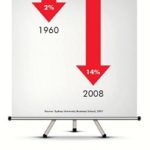Are you making assumptions about what your customers will pay?

Many business owners base their pricing either on what their competitors charge or what they think their customers are prepared to pay. Both pricing options are pretty flawed, in my opinion.
If your prices are being determined by your competitors – who could have totally different cost structures, operating expenses, financing, other sources of income and so on – you’re basing your pricing on their world.
What if you’re wrong? And believe me, I have worked with businesses who if they were fully booked would still be losing money because they have never really worked out their costs in a more realistic and strategic way.
Think about that for a second, as I’m not exaggerating in the slightest. I’ve worked with business owners who even if they were at one hundred percent capacity, their businesses would lose money. How on earth is that possible? They simply haven’t done their numbers correctly. They have pulled prices out of thin air, based on nothing more than what their opposition charge. And they have years of not making a cent to look forward to, until finally they shut the doors.
And trying to decide how much your customers are willing to pay is likewise a guess and a terrible way to do your pricing, yet so many businesses do it. And once again, I see more businesses getting this wrong than getting it right. There is no solid foundation for charging this way, and most of the businesses that do this dramatically undercharge, which of course leads to all the dramas that we’ve spoken about already.
My advice here is to make sure that when it comes to pricing, you do it strategically. Be smart about it. Yes, charge more – please do, by all means be the most expensive – but base your pricing on some sound business reasoning. This means you need to know your numbers really well, and sadly this is still a challenge for many business owners.
Do you know exactly how much it costs you to operate every single day, week and month? Do you know your hourly operating cost? Do you know if you’re making money or losing money right now – as in, did you make money today? And if you did, how much did you make, exactly?
Waiting to work this out at the end of the financial year is lunacy. Yet I often encounter business owners who sometime in July announce to the world how much money they made last financial year. Bugger that; to me a smart business knows how much money it made or lost every day. I don’t need an accountant or even a piece of software to tell me that. That’s the level of knowledge we all should have when it comes to having a very firm grip on our business finances.
Taking responsibility for your business
This is often about stepping up and taking responsibility for your business. I learned the hard way that I had to do this. I once got into big trouble with the Australian Taxation Office and a terrible business partner, which forced me to put my business into the hands of an external administrator. I had to have a hearing with the ATO – which is like getting a colonoscopy without anaesthesia.
I remember telling the lovely folks from the ATO all of my woes, all of my challenges, how difficult everything was, the horror of it all. At the end of my Academy Award–winning presentation, they said, incredibly matter-of-fact, ‘Andrew, that’s a terrible story, but we don’t care. When are you going to pay your tax bill?’ And just like that, I realised I had to step up and take responsibility for my business, and that starts with taking financial responsibility. Those lovely ATO peeps did me a big favour that day and I’ve never looked back.
So I took control of my business from a financial point of view. I knew that I was responsible for every bill, for every invoice, for every cent that I owed in tax or other responsibilities – and I had to change. In the past I had been mostly in denial about things like that. I’d leave it to the bookkeeper or the accountant to manage those things, but at the end of the day, they had no responsibility for any financial aspect of my business – I did. So I took control.
I started to get to know my numbers. I learnt to read a profit and loss sheet and a balance sheet (no matter how ugly either of those may have been). I got to know exactly how long each of my customers took to pay their accounts, and how long, on average, it took me to pay each of my suppliers. And what this actually meant. As I mentioned earlier, I learned exactly how much it cost me to run my business for an hour, a day, a week, a month and a year. I knew how much money I needed to have on hand to keep the doors open. I knew how much I owed, and how much I was owed. I knew how much I had to put aside for tax and things like holiday pay and superannuation. I dissected every product and service I sold – and quickly worked out why I never had any money. My most popular services were the least profitable. Once again, you get the drift. And while I digress a little, moving to a ‘charge what you are worth’ model will work much better when you know your numbers.
But back to my original point: question the assumptions you make about whether or not your customers can afford to pay more. From my experience they will, across every industry, as long as you give great value and exceed expectations. Don’t underestimate your customers and their loyalty to you, even as you change your business model. Yes, you will lose some, maybe a lot of your existing customers, but the point I come back to is that you will tend to lose the customers you need to lose.
Described by many as ‘the Godfather of Small Business, Andrew Griffiths has written thirteen best-selling business books, sold in over 65 countries. He is easily Australia’s #1 small business author. Andrew has shared his street smart business advice, wisdom and strategies with audiences around the world and helps large organisations to engage and connect with their small business customers. The best way to sum up what Andrew does is ‘he helps people of substance to build business of substance’.





